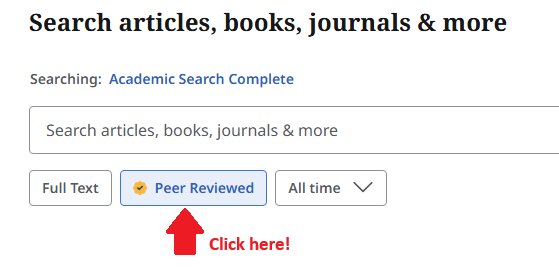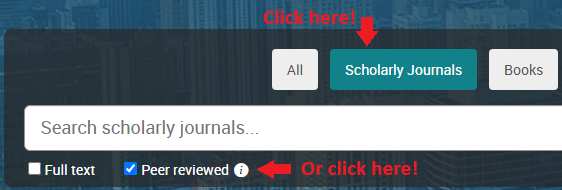Mahoney Library
Contact Information
Mahoney Library
Saint Elizabeth University
2 Convent Road
Morristown, NJ 07960
Phone:
Main Desk: (973) 290-4237
Library Hours:
Mon-Thurs 8am to 6pm
Fri-Sun Closed
Library services will be unavailable/closed:
- Thursday, June 19, 2025
- Thursday, July 3, 2025
What is Peer Review?
Peer review is the gold standard for published research! Through peer review, authors send a draft of their article (called a manuscript) to a group of professionals in their field, who then comb through the article looking for mathematical errors, flaws in reasoning, missing sources, possible biases, and general grammatical errors. Once the author's peers are finished reviewing the draft article, it is sent back to the original author to address the issues raised by the peer reviewers. This process often happens more than once, as a revised draft is sent back into peer review to see if all previous issues have been fixed and if new ones have popped up. This is usually done through the journal the author wishes to publish in.
Articles that haven't been peer-reviewed aren't necessarily bad, but for scholarly research you're generally better off going with the guaranteed quality of a peer-reviewed article.
Watch this video to learn more:
How to Find Peer-Reviewed Articles
Most research databases allow you to limit your results to articles published in peer reviewed journals. Usually there is a checkbox labeled “Scholarly" or "Peer Reviewed Journals” - or, in some cases, "Refereed". Check this box, enter your search terms and click search. However, peer reviewed journals will often publish interviews or reader-submitted responses to previous articles that did not go through the peer review process. You may need to check what type of source you're looking at if your professor requires a peer-reviewed article.


More Resources
Types of peer review
Updated 5/23/25
